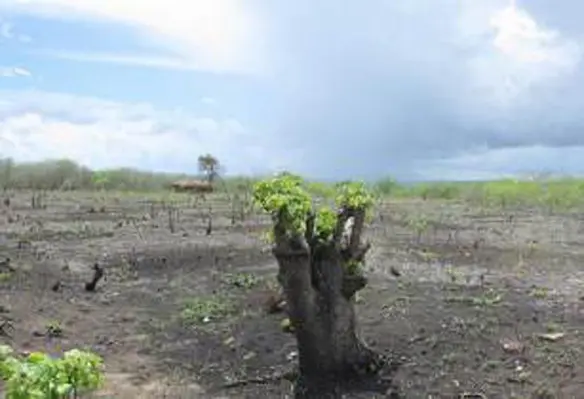The World Agroforestry Centre (ICRAF) has launched a new project promoting agroforestry as a sustainable alternative to shifting cultivation in the uplands of Myanmar
A consortium of donors from the USA, UK, Australia, Sweden, Ireland and Italy, are supporting the project. Two Myanmar NGOs, the Ecosystem Conservation and Community Development Initiative (ECCDI), and the Ar Yone Oo Social Development Association are partners in the project.
Shifting cultivation is a practice of clearing forests for the cultivation of crops. After harvesting the crop, the land is left fallow for over 10 years, allowing the forest to re-grow. Declining land sizes has however made the practice unsustainable. Villagers now clear forests permanently to establish sugarcane or rubber plantations.
Agroforestry, which is an integration of livestock and crop farming, is seen as a better more sustainable alternative. “Agroforestry is an ideal solution for uplands. It can drastically reduce the need for expensive chemical fertiliser and noxious pesticides while boosting yields and diversifying income sources,” observed Dr. Dietrich Schmidt, ICRAF researcher in charge of the project.
Recently, Myanmar’s minister of environment, conservation and forestry U Win Tum officially launched the project and offered government’s commitment towards the project. So far, two sites in the states of Shan and Chin that are characterised by mountainous landscapes and which are prone to degradation and deforestation, have been identified. The researchers hope to incorporate trees that fertilise the soil such as Himalayan Alder and jointly search with villagers for alternative income sources.
Even though heavy flooding in the Chin state has complicated progress, tree seedlings are now ready to be planted and the first cropping cycle will start in the next wet season. “A National Agroforestry Strategy and Action Plan is urgently needed for landscape restoration and livelihood development from mountains to the coast in Myanmar,” concluded Dr. Jianchu Xu, regional coordinator for ICRAF in East and Central Asia.
Mwangi Mumero





